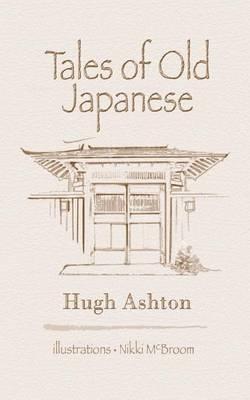May 14, 2013
Hi-ho! Silver Linings
Tales of Old Japanese, by Hugh Ashton, with illustrations by Nikki McBroom. Published by Inknbeans Press 2012. E-book version in different formats from Smashwords, Kindle Store, Kobo, etc. Printed version from Amazon, etc. 79pp, ISBN 978-1-524-3028-7
Reviewed by Mark Smith
 Hugh Ashton is well known to SWET members as a successful technical writer and author. Two of his works, Tales of Old Japanese, and one of his Sherlock Holmes stories, will be published as English-language readers by Macmillan Language House this autumn. In this review, I will take a brief look at the current edition of Tales, which is a compilation of some of Ashton’s short stories.
Hugh Ashton is well known to SWET members as a successful technical writer and author. Two of his works, Tales of Old Japanese, and one of his Sherlock Holmes stories, will be published as English-language readers by Macmillan Language House this autumn. In this review, I will take a brief look at the current edition of Tales, which is a compilation of some of Ashton’s short stories.
Tales of Old Japanese is a series of uplifting short stories about the silver generation in Japan, but is far from being a morbid portrayal of people with one foot in the grave. The stories highlight a sensitive side of the author that contrasts with the suspense and mystery of Ashton’s crime fiction, such as At the Sharpe End or his series of Sherlock Holmes stories, including Tales from the Deed Box of John H. Watson MD.
The five stories in Tales of Old Japanese range from the hauntingly eerie of “The Old House” to the warm tenderness of “Keiko’s House” and “Haircuts.” All include convincing characters familiar to anyone who has spent any time living in Japan, with bustling old ladies determined to organize themselves and their neighbors and the occasional reference to the Japanese tendency to utilize literal translations of personal names as corporate identities. The author’s close familiarity with Japanese life and customs is what makes these stories so accessible and enjoyable. The writing is warm and lively for people reading in their native tongue, while still being accessible and enjoyable for those reading the stories in their second.
“Keiko’s House”
The opening story explores the heartening effect of a visit by a stranger to Keiko, a middle-aged woman living alone in her childhood home. The unexpected visitation teaches her some of the secrets about the history of her own house and her parents. It also helps her come to terms with the loss of her parents and the enigmatic conclusion provides an encouraging start to the collection. This and the following tale spotlight the hardships suffered by those who lived through World War II and the enduring bonds and memories forged during those troubled times. The author finds the right tone in being respectful without being overly sentimental or judgmental.
“Haircuts”
This is a delightful story about the unexpected consequences caused by memories stirred by a trip to a new barber. Written from the view of its dapper leading character, this is an affectionate story that reminds us that while events of yesterday a little hazy for the older generation, the memories of events 40 or 50 years ago can still have a powerful effect.
At 20 pages, this is the longest of the five stories. The additional space allows Ashton time to develop the main character in more detail, and this draws the reader deeper into the story. We can identify with the character in a way that the shorter stories do not allow.
“Click”
The third story in the collection, “Click,” focuses on a middle-aged widow’s obsession with capturing a perfect memory on film each day. An avid photographer himself, Ashton uses this story to pass on some tips to the reader. Thoughtfully, it captures the zeal Japanese obasan ladies bring towards their hobbies. It also serves as a cautionary tale on the danger of relying on one’s own judgment and the advantages of consulting friends and family about health problems.
“Mrs. Sakamoto’s Grouse”
The fondness the main character develops for a grouse she adopts at her local zoo is the whimsical subject of the fourth story. It allows Ashton to indulge in some of the idiosyncratic metaphors and wry humor that will be familiar to readers of some of his other work. Like the first piece in the collection, this one reflects on the meaning of loss and how people learn to cope with it. It also includes some stray punctuation that will keep the habitual proofreaders on their toes.
“The Old House”
A ripping yarn about two boys who find more than they bargained for in an empty, old house rounds out the collection, “The Old House” tells the story of what happens to the boys when one of them decides to explore the interior of a deserted house in their neighborhood. Originally written as a Halloween story, and portraying events through the eyes of the two boys, it provides a spine-chilling finale to the collection.
All the stories offer insights into life in modern Japan while touching on familiar universalities, so their themes will resonate with readers from different cultures. One only wishes some of them would keep going, telling us more about their engaging characters. Their viewpoints from people well on in years make a good counterpoint to the obsession with youth that pervades much of modern society.
_________________
Mark Smith is a writer, translator, editor, and facilitator living in Nara, Japan. His articles on Japanese archaeology have appeared in several publications, and his articles on Japanese football (soccer) often appear in JSoccer Magazine, published in Kobe.
(Originally written for the SWET website, 15 May 2013.)
© Mark Smith
